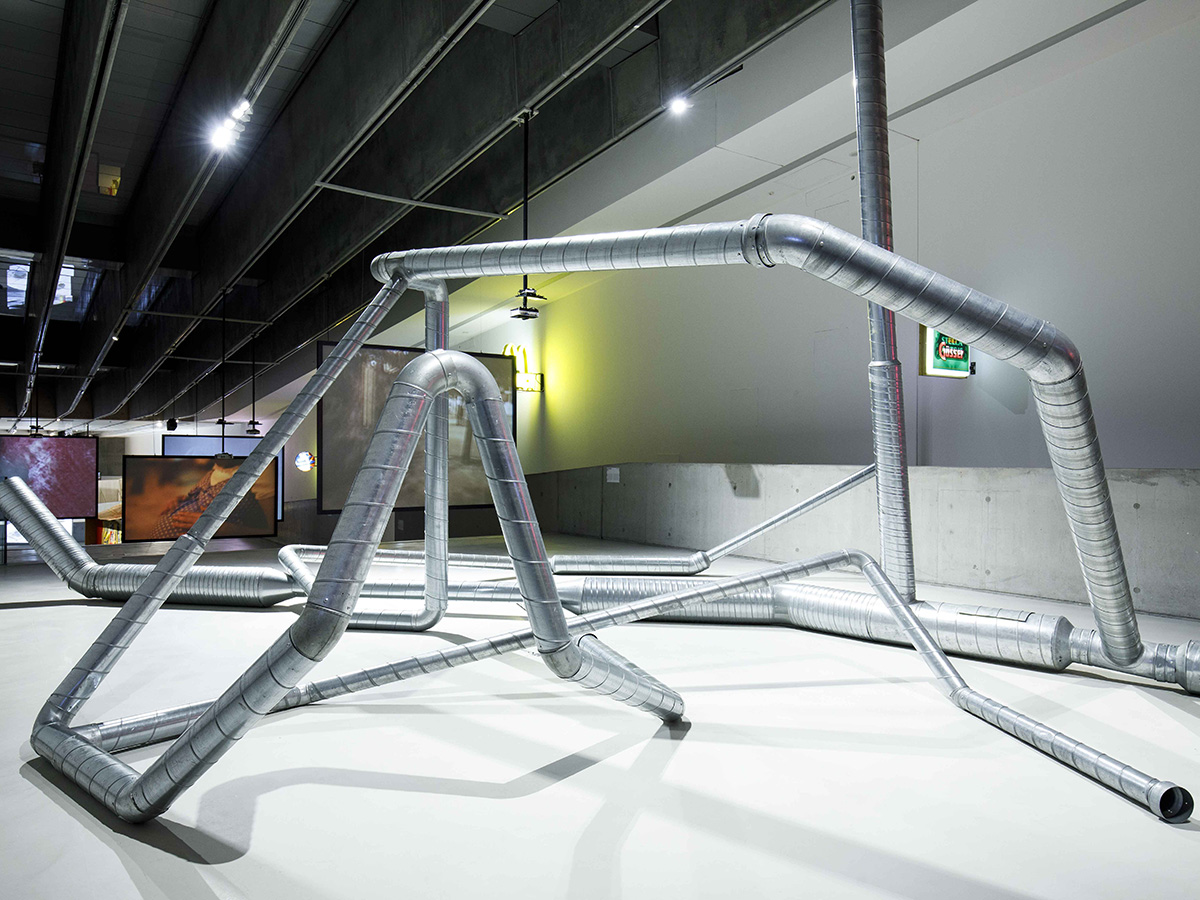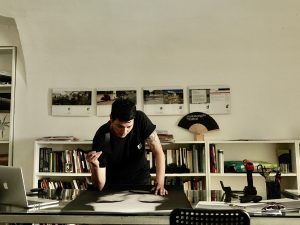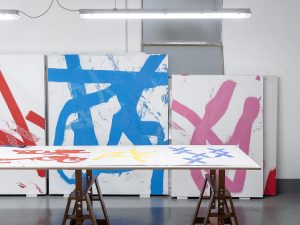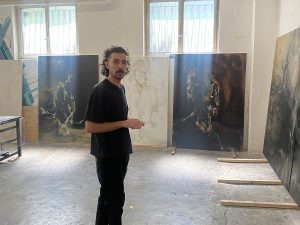Minhocão — the “big worm” — is an elevated highway that penetrates and crosses the entire central area of São Paulo. It is the starting point for one of the most intense works by artist Rosa Barba. Born in 1972, she is Sicilian by origin but was raised and educated in Germany, where she currently lives. Entitled Disseminate and Hold (2016), the artist’s work dedicated to the enormous piece of Brazilian road infrastructure well illustrates her ability to articulate an exploration of man-made landscapes, further highlighting her attitude that contemplates history, politics, social and imaginary in a single flow. The narration which underpins this work helps us understand how complex structures such as a motorway, capable of doubling traffic capacity in the heart of a metropolis, are nothing but vast illusions, mixing political agendas and futuristic utopias, broken dreams but also obscure, crooked dealings and a multitude of social paradoxes.
From her earliest works, the artist has shown a preference for video and sculpture, focusing on forgotten stories or narratives whose memory is being lost, and then immersing herself in research that integrates testimonies and documentation related to shreds of reality. To these stories, Rosa Barba often adds plots which are not interpretative in the strict sense, for her research work is never an end in itself, never a stylistic operation. To this end, she often creates installations in which film and story take on sculptural forms; these, too, are experimental spaces, in which the raw material of the work is the film, conjugated and extended in different scales and relationships, from suspended projectors to the many other solutions that she has adopted on different occasions. This has been seen in her many solo exhibitions in recent years — those at the Reina Sofia in Madrid and at the Hangar Bicocca in Milan in 2017, at the Kunsthalle in Bremen and the Konsthall in Malmö five years later, at the Neue Nationalgalerie in Berlin in 2021 and recently in Ljubljana— and in her frequent participations in international exhibitions, including the São Paulo, Sydney and Venice biennales (in 2007, 2009 and 2015). In other cases, she makes use of soundtracks, as in one of her most successful works, Free Post Mersey Tunnel (2010) recently shown in Italy in the choral exhibition orchestrated by Hou Hanru at MAXXI in Rome (in whose permanent collection the work is housed), where a maze of metal tubes broadcast the sounds recorded in the tunnels beneath the River Mersey. The tubes create a kind of architecture of visual space and of prominent, almost violent occupation, as if to underline a submerged idea of catastrophe, of metamorphic place. This is, then, an outright mapping of space, which draws in in the eye but also the ear, overturning an apparent order of things with a compressed sound coming from the city and perceived from below. Noises, sound traces, voices: in Rosa Barba’s investigation everything becomes part of a large construction and her idea of the street — one of the primary themes of her discourse — forcefully emerges without ever falling into a logic of sterile or purely documentary representation. Rosa Barba is an artist who draws on a repertoire of data that she always interprets, never allowing herself to be influenced by their apparent veracity or even their calculated coldness.
The artist often makes use of 16 mm film, later transferred to digital, perhaps precisely in order to initiate a reflection that is increasingly linked to the intimate dimension, as well as to fragmentation strategies that start from the game, and which she redistributes in her research. Indeed, her directorial discourse is somehow opposed to the methodologies proper to cinema in the strict sense, because in its intentions it upsets the status quo ofcinema, adopting a more expansive way of thinking. The generating force of Rosa Barba’s work lies precisely in this competence, or better, vocation — in this dimension of staging her work, in her desire to intervene in the medium.
The two works mentioned here, which were conceived at two very different moments in Rosa Barba’s career, allow us to understand how she has constructed a radical, rigorous and never obvious discourse. For her, the street is an active generator of reality.
Bibliographic references
VV. AA., Rosa Barba. From Source to Poem, Hatje Cantz, 2017
VV. AA., Rosa Barba: In Conversation with, Mousse Publishing, 2011





